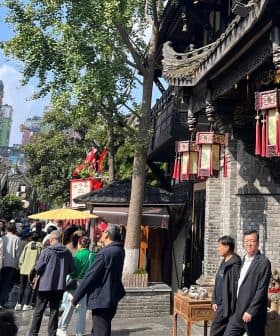Chinese Consumers Confused by Olive Oil Choices
The confusing marketing and pricing of olive oil in China makes it difficult for consumers to differentiate between high-quality and low-quality products, despite efforts to establish standards in 2009. Imported brands are often recommended as the best choice, but the disparity in pricing and marketing tactics still leave many Chinese consumers bewildered when trying to make a purchase.
Olive oil reduces aging, is a frontline dietary defense against the ravages of heart disease, and tastes great to boot. That’s quite a reputation to live up to, which leaves the average Chinese consumer in a bit of a bind. The bewildering array of choices and confusing marketing messages confuse many Chinese consumers about what to buy.
The problem is that a mixture of overzealous marketing and bizarre pricing makes it hard for the uninitiated to separate the wheat from the chaff. Every brand of olive oil will boast about how healthy it is, how high in unsaturated fats, how pure, and how high-quality. But of course, that’s advertising for you. How about using the numbers to distinguish between good and bad? Well, that might work if you could find – and then believe – the numbers. Chinese reports on the matter say that the labeling of most olive oil is confusing and hard to understand for the average consumer.
Everyone wants fresh olive oil, right? So take a look at the date of production, which should be stamped somewhere on the label – except you’re not sure if the date you’re reading is the date that the olives were squeezed and pressed in (fill in country here) or if this is the date the whole thing was packaged in China. Same with the use-by date and other critical pieces of information. In October 2009, China laid down some laws and standards for olive oil and its packaging, but what this Chinese journalist finds on shelves still leaves much to be desired.
But you pay for what you get, right? Well, you’d like to think so, but what can justify the difference between a 1‑liter bottle of Italian virgin olive oil that costs 200 yuan (about US$29.40) and the 2.5‑liter olive-plus-sunflower oil that costs less than 20 yuan (US$2.94)? Having even a little olive in it seems to make certain cooking oils more expensive than those that don’t. If olives are the magic ingredient that accounts for the price differences, you might be able to imagine why the price of the premium stuff is so dear. In other words, this is what marketing does best – inflate the prices all around – but whether or not that’s the best for the consumer is another issue.
Some Chinese reports advise about how to pick and choose oil. Look at the clarity of the oil, they say. Does it look thick or thin? Is the color too dark or too light? Stick with the good brands, they say. More marketing, more confusion.
Of course, most of the good brands are imported, stocked in Carrefour or more upmarket groceries catering to expats, who, with their higher incomes and Western backgrounds, make for a much different consumer than the average Chinese, who is going to have to do some heavy head-scratching before they can figure it all out and find something they can stick with.








